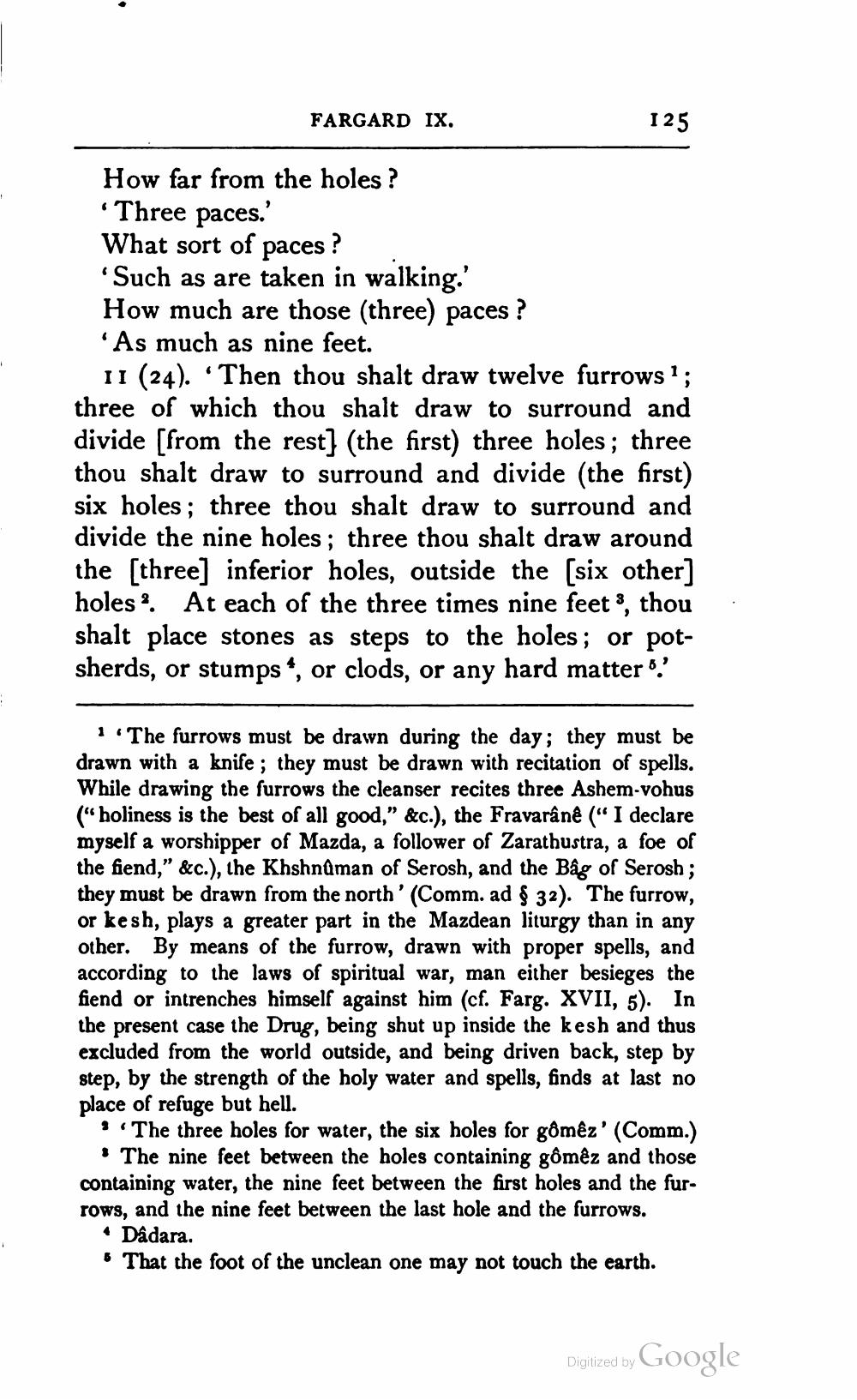________________
FARGARD IX.
125 How far from the holes ? •Three paces.' What sort of paces ?
Such as are taken in walking.' How much are those (three) paces ? *As much as nine feet.
11 (24). “Then thou shalt draw twelve furrows ? ; three of which thou shalt draw to surround and divide (from the rest] (the first) three holes; three thou shalt draw to surround and divide (the first) six holes; three thou shalt draw to surround and divide the nine holes; three thou shalt draw around the [three] inferior holes, outside the (six other] holes . At each of the three times nine feet *, thou shalt place stones as steps to the holes; or potsherds, or stumps, or clods, or any hard matter.'
.
1.The furrows must be drawn during the day; they must be drawn with a knife; they must be drawn with recitation of spells. While drawing the furrows the cleanser recites three Ashem-vohus ("holiness is the best of all good." &c.), the Fravarâne (" I declare myself a worshipper of Mazda, a follower of Zarathustra, a foe of the fiend," &c.), the Khshnûman of Serosh, and the Bag of Serosh; they must be drawn from the north' (Comm. ad § 32). The furrow, or kesh, plays a greater part in the Mazdean liturgy than in any other. By means of the furrow, drawn with proper spells, and according to the laws of spiritual war, man either besieges the fiend or intrenches himself against him (cf. Farg. XVII, 5). In the present case the Drug, being shut up inside the kesh and thus excluded from the world outside, and being driven back, step by step, by the strength of the holy water and spells, finds at last no place of refuge but hell.
The three holes for water, the six holes for gômêz' (Comm.) • The nine feet between the holes containing gômêz and those containing water, the nine feet between the first holes and the furrows, and the nine feet between the last hole and the furrows.
• Dadara. * That the foot of the unclean one may not touch the earth.
Digitized by
Digitized by Google




